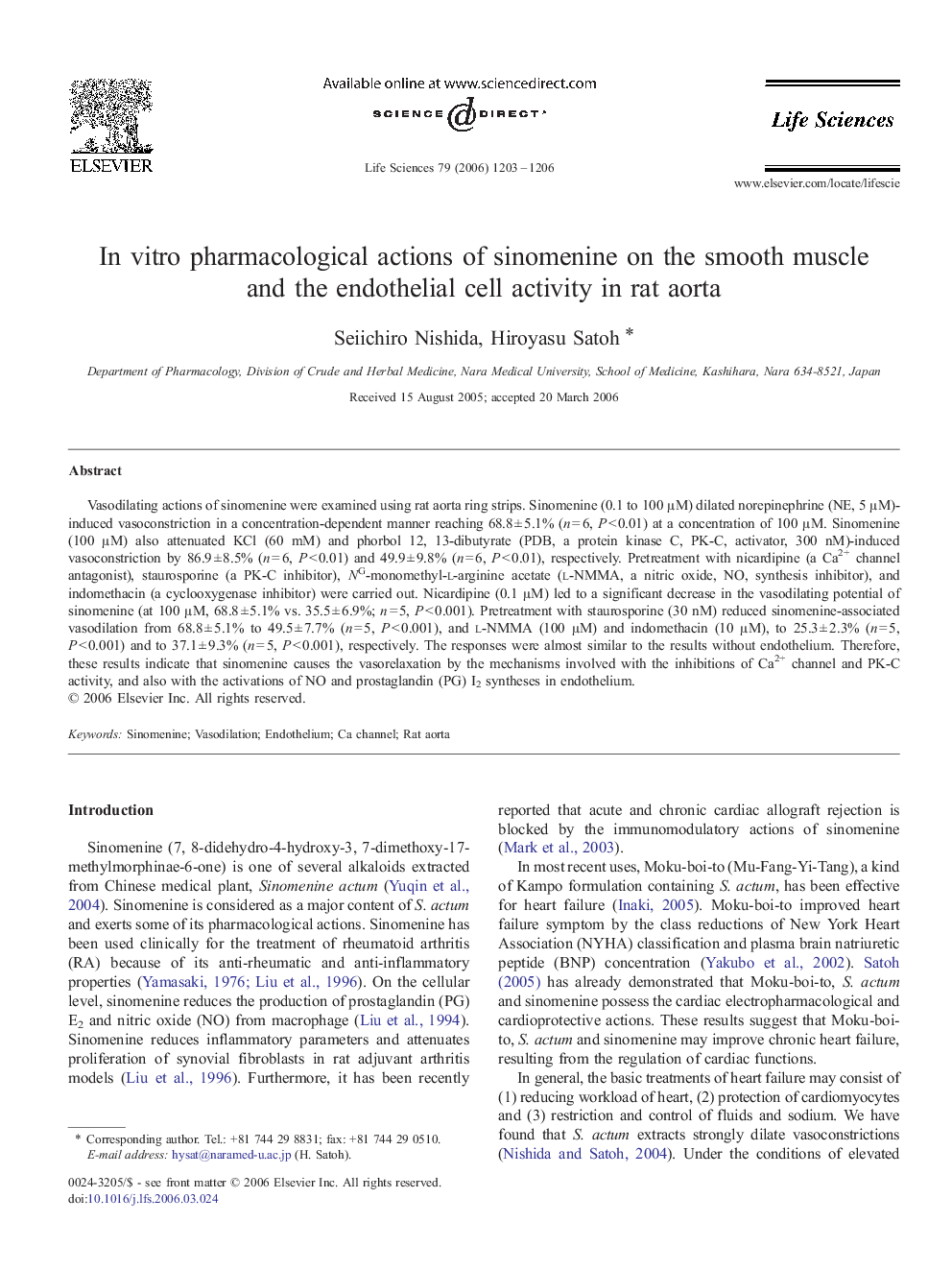| Article ID | Journal | Published Year | Pages | File Type |
|---|---|---|---|---|
| 2554829 | Life Sciences | 2006 | 4 Pages |
Vasodilating actions of sinomenine were examined using rat aorta ring strips. Sinomenine (0.1 to 100 μM) dilated norepinephrine (NE, 5 μM)-induced vasoconstriction in a concentration-dependent manner reaching 68.8 ± 5.1% (n = 6, P < 0.01) at a concentration of 100 μM. Sinomenine (100 μM) also attenuated KCl (60 mM) and phorbol 12, 13-dibutyrate (PDB, a protein kinase C, PK-C, activator, 300 nM)-induced vasoconstriction by 86.9 ± 8.5% (n = 6, P < 0.01) and 49.9 ± 9.8% (n = 6, P < 0.01), respectively. Pretreatment with nicardipine (a Ca2+ channel antagonist), staurosporine (a PK-C inhibitor), NG-monomethyl-l-arginine acetate (l-NMMA, a nitric oxide, NO, synthesis inhibitor), and indomethacin (a cyclooxygenase inhibitor) were carried out. Nicardipine (0.1 μM) led to a significant decrease in the vasodilating potential of sinomenine (at 100 μM, 68.8 ± 5.1% vs. 35.5 ± 6.9%; n = 5, P < 0.001). Pretreatment with staurosporine (30 nM) reduced sinomenine-associated vasodilation from 68.8 ± 5.1% to 49.5 ± 7.7% (n = 5, P < 0.001), and l-NMMA (100 μM) and indomethacin (10 μM), to 25.3 ± 2.3% (n = 5, P < 0.001) and to 37.1 ± 9.3% (n = 5, P < 0.001), respectively. The responses were almost similar to the results without endothelium. Therefore, these results indicate that sinomenine causes the vasorelaxation by the mechanisms involved with the inhibitions of Ca2+ channel and PK-C activity, and also with the activations of NO and prostaglandin (PG) I2 syntheses in endothelium.
